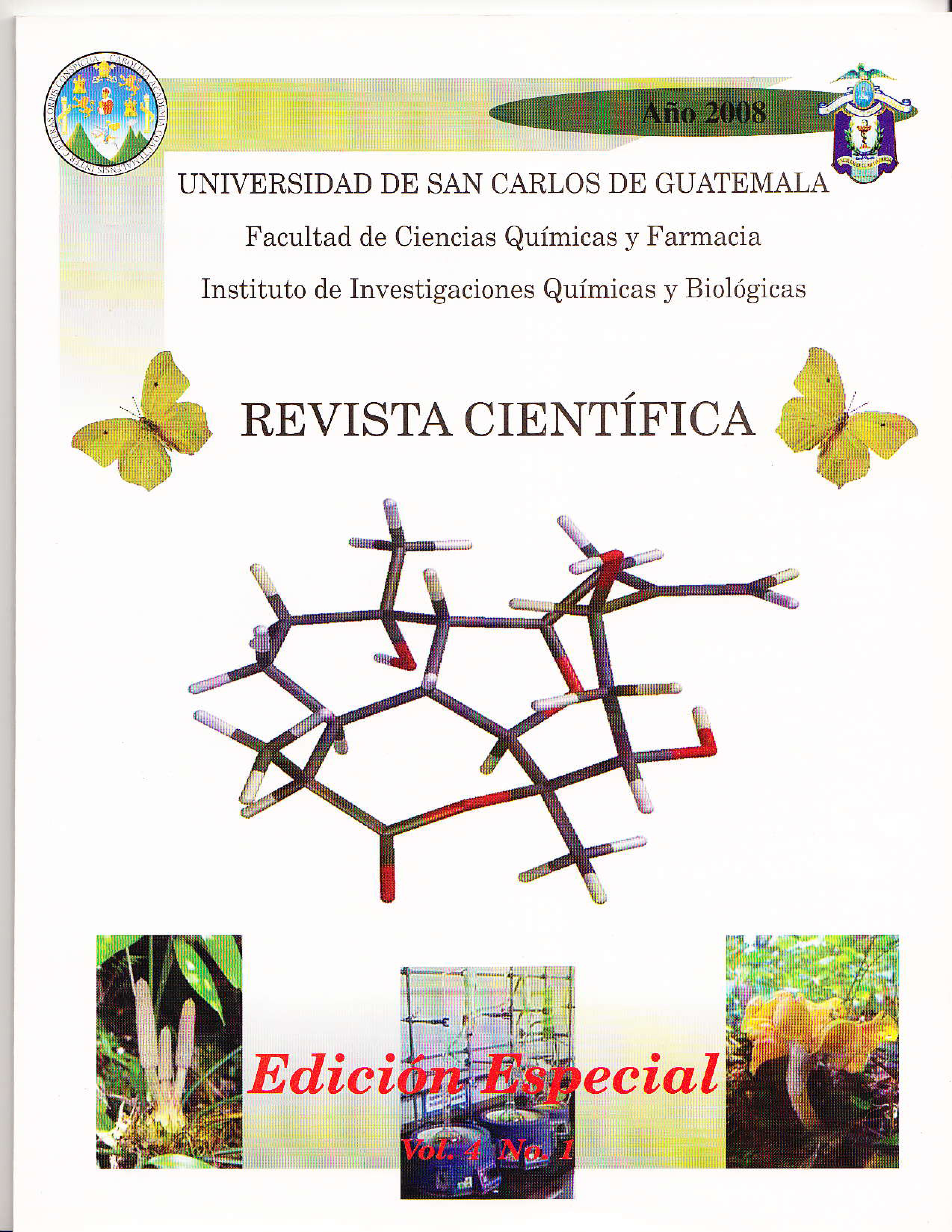Chanterelle and Craterellus in Guatemala: Diversity and Microscopic Analysis of Seven Representative Species in the Country.
DOI:
https://doi.org/10.54495/Rev.Cientifica.EdicionEspecial2008.188Keywords:
Chanterelles, Craterellus, Guatemala, Diversity, Microscopic analysisAbstract
In this study, the different species of the genus Cantharellus that have been found in Guatemala for some decades are cited, as well as the results of microscopic analyzes obtained from seven particular species that bear fruit in Guatemala: Cantharellus lateritius, C. cibarius, C. atrol i1acinus, C. cinnabarinus. Craterellus ignicolor, C. tubaeformis and C. calvenles. In order to determine if there are differences in the measurements reported in Europe or North America, where most of the species of this important genus have been described, the samples analyzed were selected from the Micotcca 'Rubén Mayorga Peralta' of the School of Chemistry Biology of the University of San Carlos of Guatemala, to which basidia, sterigmata, cystidia and spores were measured and photographed. It was observed that there are differences in the measurements of some structures with respect to those described in the literature, although many coincide in normal ranges. On the other hand, it is concluded that there are samples that correspond to names different from those that were determined at the time and others that have been determined thanks to the recent publication of studies in other countries.
Downloads
References
Bessette AE.. Roody W., Bessette AR. & Dunaway D. 2007. Mushrooms of the Southeastern United States. Syracuse University Press. New York. Pp 94-95.
Bran MC., Morales O.. Caceres R y Flores R. 2003. Contribución al conocimiento de los hongos comestibles de Guatemala. USAC-11QB. Revista Científica de la Facultad de CCQQ y Farmacia. 1:1-24. https://doi.org/10.54495/Rev.Cientifica.EdicionEspecial2003.232
Dahlman M., Danell E. & Spatafora JW. 2000. “Molecular systematics of Craterellus: cladistic analysis of nuclear LSU rDNA sequence data.” Mycol. Res. 104(4) 388-394, https://doi.org/10.1017/S0953756299001380
Feibelman T., Doudrick R., Cibula W. & Bennett J. 1997. Phylogenetic relationships within the Cantharellaceae inferred from sequence analysis of the nuclear large subunit rDNA. Mycol Res. 101:1423-1430, https://doi.org/10.1017/S0953756297004115
Franco-Molano A. y Uribe-Calle E. 2000. Hongos Agaricales y Boletales de Colombia. Biota Colombiana. 1: 25-43.
Guevara G. y Garza F. 2005 . Estudio de la subunidad mayor del ADN ribsomal nuclear de algunas especies del género Cantharellus en México. Rev Mex Mic 20:21-26.
Henkel Tw., Terborgh J. & Vilgalys R. 2002. Ectomycorrhizal fungi and their leguminous hosts in the Pakaraima mountains of Guyana. Mycol. Res. 106: 515-531, https://doi.org/10.1017/S0953756202005919
Kuo M. 2007. 100 Edible Mushrooms, with tested recipes. Ann Arbor. The University of Michigan Press. Pp. 142-144, https://doi.org/10.3998/mpub.157982
Mata M., Hailing R. & Mueller G, 2003. Macrohongos de Costa Rica. Instituto Nacional de
Biodiversidad-TNBio. Vol. 2. p. 130-133.
Metzler S. & Metzler V. 1992. Texas Mushrooms. A field guide. University of Texas Press. Austin. USA. Pp.236-241.
Miller OK. & Miller HH. 2006. North American Mushrooms. A field guide to edible and inedible fungi, Falconguide. The Globe Pequot Press. Pp.336.
Morales O., Flores R., Samayoa R. y Bran B. 2000. Estudio etnomicológico de la cabecera municipal de Tecpán Guatemala, Chimaltenango. USAC-ITQB. Revista Científica de la Facultad de CCQQ y Farmacia. 15:10-20.
Persson O, 1997. The Chantarelle Book. Ten Speed Press, Berkeley, USA.
Pilz D., Norvell L , Danell E„ & Molina R. 2003. Ecology and Management of Commercially Harvested Chanterelle Mushrooms. USDA Forest Service General Technical Report PNW-GTR-576, https://doi.org/10.2737/PNW-GTR-576
Redhead S.. Norvell L. & Danell E. 1997. Cantharellus formosus and the Pacific Golden Chantarelle Harvest in Western North America. Mycotaxon LXV: 285-322
Singer R., Araujo T. & Ivory M.H. 1983. The Ectotrophi igia. Pp. 14-15.
Trappe M.J. 2004. Habitat and host associations of Craterellus tubaeformis in northwestern Oregon. Mycologia. 93:498-509, https://doi.org/10.1080/15572536.2005.11832949
Downloads
Published
How to Cite
Issue
Section
License
Copyright (c) 2008 R. Flores, G. Ché, J. Garcia, M. Maldonado, M. Bran, O. Morales, R. Cáceres

This work is licensed under a Creative Commons Attribution 4.0 International License.
Authors who publish with this journal agree to the following terms:
- Authors retain copyright and grant the journal right of first publication with the work simultaneously licensed under a Creative Commons Attribution License 4.0 that allows others to share the work with an acknowledgement of the work's authorship and initial publication in this journal.
- Authors are able to enter into separate, additional contractual arrangements for the non-exclusive distribution of the journal's published version of the work (e.g., post it to an institutional repository or publish it in a book), with an acknowledgement of its initial publication in this journal.
- Authors are permitted and encouraged to post their work online (e.g., in institutional repositories or on their website) prior to and during the submission process, as it can lead to productive exchanges, as well as earlier and greater citation of published work.









